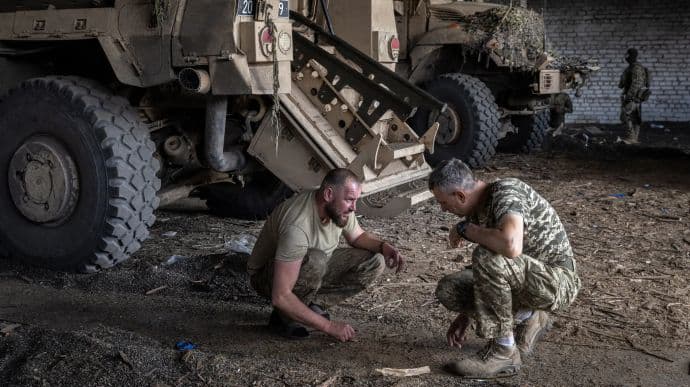Biden administration worries counteroffensive falls behind schedule – NYT

The administration of US President Joseph Biden unofficially says that the Ukrainian counteroffensive started slowly and its results in the first few weeks "sobering", but they are not in a hurry to draw conclusions. Source: The New York Times Quote from NYT: "In Washington, officials in the Biden administration are publicly urging patience even as they privately fret that the initial progress has been slow.
One senior administration official called the results of the first couple of weeks 'sobering,' adding, 'They're [Ukrainians] behind schedule'. The senior U.S. military official also acknowledged the slower-than-hoped-for pace of operations but added that this was not unexpected given the extensive Russian defenses, and cautioned against drawing any broad conclusions based on the initial operations.
Advertisement:Both officials spoke on the condition of anonymity to discuss confidential government assessments." Details: The newspaper explains that after three weeks of the counteroffensive, the Ukrainian army is facing a number of problems that complicate its plans, including a huge strip of minefields that the Russians have created for defence, and the peculiarities of the terrain in the southeast, where open fields do not provide cover.
NYT writes that to shut off supply routes to the Crimean Peninsula and establish a foothold for further advances, Ukraine is attempting to divide the southern Russian-occupied region into two zones. To do this, it must march southward into the Sea of Azov. The main defensive structures of Russia are located a dozen kilometres behind a well-protected territory.
This is the most difficult section to break through.
We have launched English Twitter! Follow us!
Ukraine's approach has been to probe, attacking at various locations to identify a weak spot in fortifications. Russian forces are trying to delay Ukrainian soldiers with mines, artillery, assault helicopters, and counter attacks before they can discover a gap and send troops streaming through it into captured territory.
Russia has been planning for the attack for months. Ukraine's success now depends on how many tanks, armoured vehicles and soldiers it can keep before it reaches the main defence line, the NYT notes. According to the media, during the winter, Ukraine and its Western allies prepared and equipped about 40,000 soldiers for the offensive.
In March, the United States transferred 113 Bradley fighting vehicles. At least 17 of them - more than 15% - were damaged or destroyed in the fighting, the official said. Russian Ka-52 attack helicopters were able to slip past air defence systems, slowing down the movement of Ukrainian troops, damaging or destroying tanks and armoured fighting vehicles provided by the West.
According to a senior US military official, Russian forces have not only increased the size of minefields and made them more widespread, but have also proven their ability to replenish some minefields cleared by Western equipment. Ukrainian troops are pausing in some places along the front line to reevaluate what tactics and methods of breaching and demining work best, a US official said. As the NYT writes, all the obstacles "turned the early stages of the counteroffensive into a slow and bloody slog", limiting Ukrainian forces to about four miles (6.44 km) of recaptured territory.
This is less than half the distance that Ukraine needs to cover to reach Russia's main defensive positions. Currently, Ukraine's counteroffensive is taking place on three fronts. At two of the three points of attack, south of the city of Velyka Novosilka and the city of Zaporizhzhia, Ukraine advanced step by step and recaptured a total of eight villages.
In the third section, south of the city of Orikhiv, the offensive stalled in the fields. The NYT notes that Ukraine advanced in two places where the troops were provided with less new Western weaponry, and stalled where the most advanced new weapons were deployed - American Bradley and German Leopard 2 tanks. Perhaps Western weapons were deliberately deployed in areas where Russian defences were more rigid.
According to the soldiers, the slow advance there can be explained by local factors: the nearest villages, where you could find abandoned houses and cellars for shelter, are further from the front line than elsewhere, and in open fields, artillery fire was so intense that the battlefield "looks like Swiss cheese".
Ukrainian officials say that the battle is going according to plan and the most important thing is ahead.
Journalists fight on their own frontline. Support Ukrainska Pravda or become our patron!